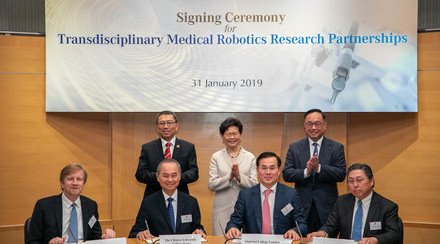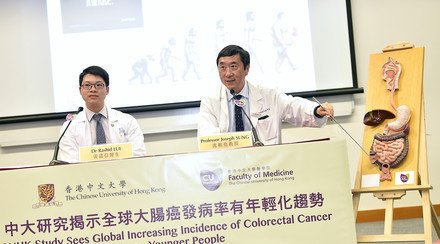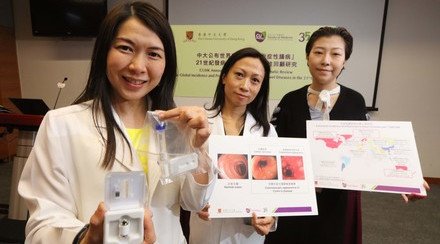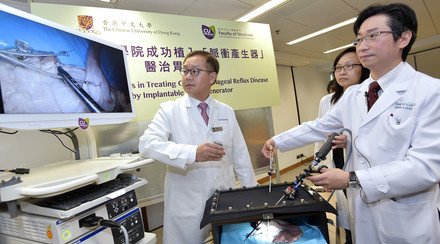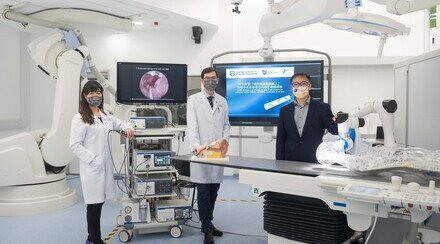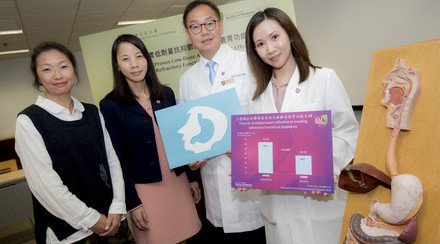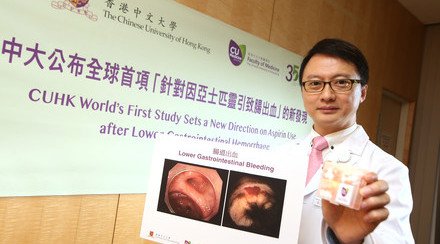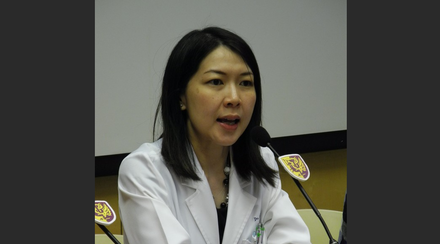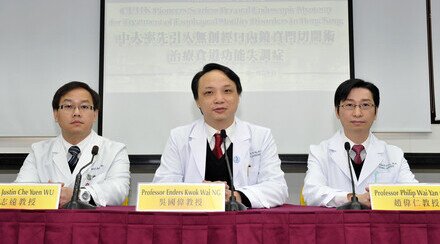CUHK and ETH Zurich Forge an Alliance on Innovative Technologies for Gastrointestinal Diseases
From micro to nano scales, researchers around the world are developing minimal and sophisticated medical machines that enable non-invasive and selective therapies. The Chinese University of Hong Kong (CUHK) Chow Yuk Ho Technology Centre for Innovative Medicine and The Multi-Scale Robotics Lab, Institute of Robotics and Intelligent Systems at ETH Zurich, Switzerland are forging an alliance to develop innovative technologies for gastrointestinal diseases. The alliance aims to promote academic exchange and research collaboration to achieve medical advances to benefit patients.
Collaboration with world's top engineering institute and pioneer in nanotechnology
Nanotechnology is the study and application of extremely small things. It is science, engineering, and technology conducted at the nanoscale, which is about 1 to 100 nanometers. One nanometer is one-billionth of a meter: for example a human hair is approximately 80,000-100,000 nanometers wide and a strand of DNA is 2.5 nanometers in diameter.
On the medical front, it helps broaden the medical tools, knowledge, and therapies currently available to clinicians. Researchers are experimenting with the use of nanoparticles and nanorobotics to travel within the human body for diagnosis and treatment of diseases. With the realization of nano medical devices, it is expected that patients will benefit from wounds being minimized as much as possible.
ETH Zurich in Switzerland has been named the world's 5th best university in the 2017 QS Rankings for engineering and technology subjects. Over 20 Nobel Prize laureates have or had a connection with the University, including Albert Einstein. Its Multi-Scale Robotics Lab (MSRL) conducts research and develops tools and processes required to fabricate and assemble micron-sized robots and nanometer scale robotic components. Since 2013, joint projects between CUHK, ETH Zurich and a university in South Korea have successfully developed magnetic microrobots for cells and drugs delivery in the human body.
Prof. Joseph SUNG, Vice-Chancellor and President of CUHK hailed the collaboration, he said, ‘ETH Zurich is renowned of its strong foundation in engineering and natural sciences. We believe the intercontinental and cross-disciplinary skill and knowledge transfer will generate great ideas and benefit patients. Over the years, CUHK has been dedicated to the development of healthcare innovation and biomedical engineering. The collaboration with ETH Zurich will further sharpen our edge in the field, and is expected to mark a milestone in local as well as global healthcare technology advancement.’
At the forefront in experimenting nanotechnology for clinical applications in gastrointestinal diseases
Prof. Dr. Bradley NELSON, Head of the the Institute of Robotics and Intelligent Systems, ETH Zurich remarked, ‘Microrobotics and nanomedicine are the future directions in medical robotics. We are delighted to work with the CUHK research team who help translate the technology into clinical practices. We are impressed by their insight and commitment in developing medical innovations. We look forward to working together and generating more possibilities.’
Throughout the years, the Faculty of Medicine of CUHK has achieved remarkable milestones in minimally invasive and non-invasive surgery. In 2015, the Chow Yuk Ho Technology Centre for Innovative Medicine was established to serve as a platform to encourage synergies and collaborations between clinicians and engineers on medical innovations and technologies. Nano-robotics has been one of the main focuses of the centre.
The two institutes will undertake collaborative research on gastrointestinal diseases. The collaboration will enhance preclinical and clinical studies on the application of forefront innovative technologies like nanorobotics for gastrointestinal diseases. One of the key highlights of innovation is a magnetic-guided endoscope which will allow a small bowel endoscopy to be completed in 30 minutes, half of the time needed for a conventional one. The system uses magnetic force to drive a 10mm endoscope inside the small intestine during the check-up.
Prof. Philip CHIU, Director of the Chow Yuk Ho Technology Centre for Innovative Medicine, CUHK explained, ‘Small bowel endoscopic examination is a rather difficult procedure as our small intestine is 5 meters long, soft in nature with multiple foldings. The new technology developed from ETH was inspired by previous experiments on magnetic-guided cardiac catheters. Compared to conventional enteroscopy, it is much easier for the 10mm endoscope to travel through the whole small bowel for complete examination. This magnetic-guided endoscope is 10mm in diameter which can be precisely steered through the whole small bowel, enhancing complete examination with lesser pain and discomfort to patients.’
CUHK will partner with ETH to develop a novel magnetic guided biopsy forceps for tissue sampling. The team will soon start pre-clinical testing and target the system to undergo clinical trial in three years time.

The Chinese University of Hong Kong (CUHK) and ETH Zurich are forging an alliance to develop innovative technologies for gastrointestinal diseases. (From left) Prof. Li ZHANG, Assistant Professor, Department of Mechanical and Automation Engineering, CUHK; Prof. Joseph SUNG, Vice-Chancellor and President, CUHK; Prof. Dr. Bradley NELSON, Head of Institute of Robotics and Intelligent Systems, ETH Zurich and Prof. Philip CHIU, Director of the Chow Yuk Ho Technology Centre for Innovative Medicine, Faculty of Medicine, CUHK.
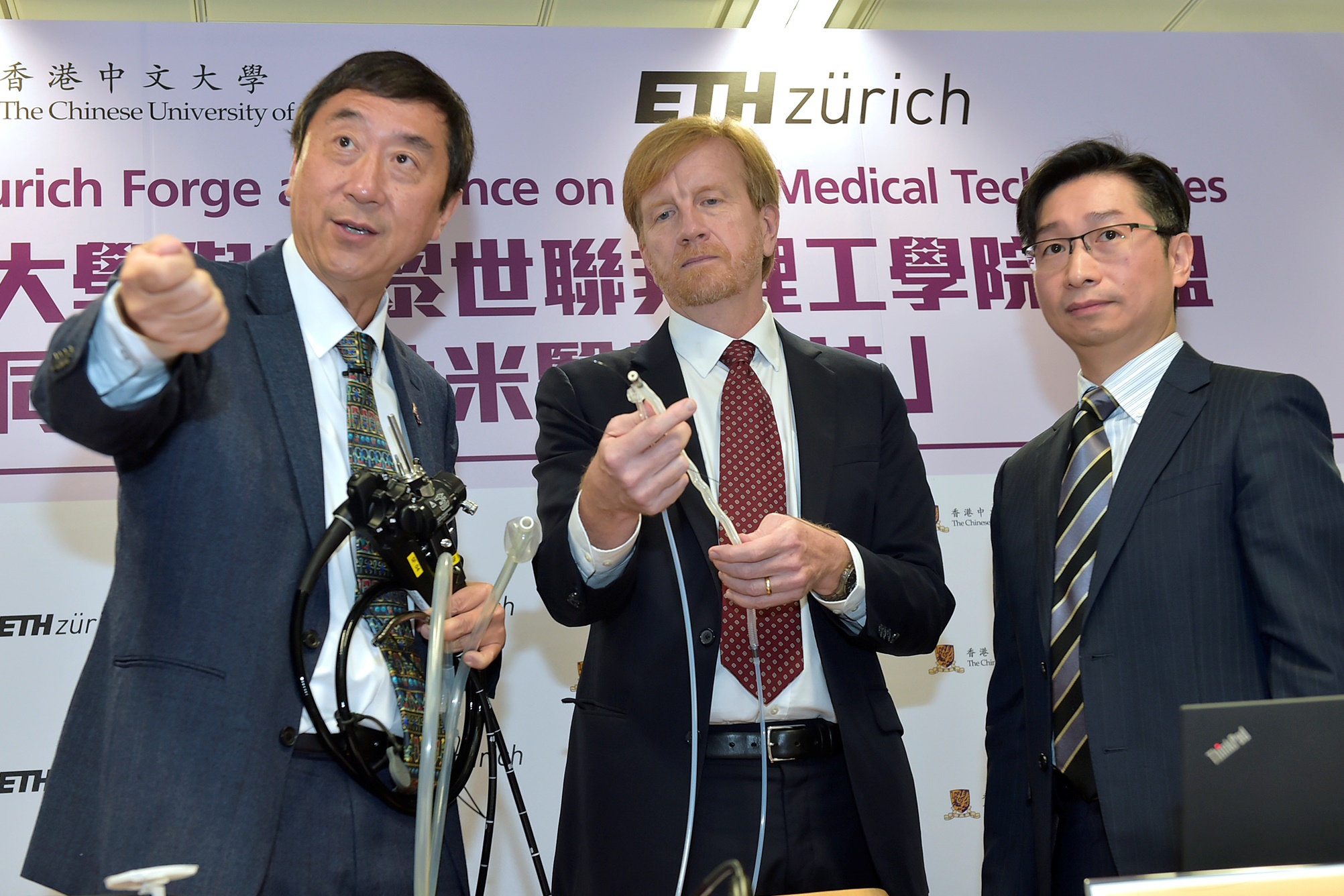
Prof. Joseph SUNG (Left) points out that the conventional endoscopes are not flexible enough to travel along the small bowel intestine, while the new magnetic guided endoscope is slimmer and more elastic. The magnetic driven device can conduct more precise check-up, save half of the procedural time and reduce discomfort caused to patients.

Prof. Dr. Bradley NELSON highlights that the tip of the magnetic guided endoscope is made with nanotechnology, which can deliver drugs or conduct biopsy.
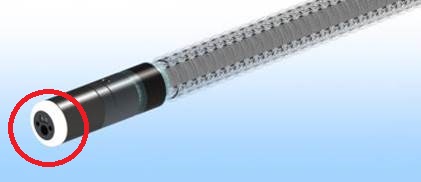
The graphic above is the latest magnetic guided endoscope, of which the tip (in red circle) is of 10mm in diameter. It can be used to inspect, take samples and release drugs.

Illustration of the operation of the magnetic guided endoscope



